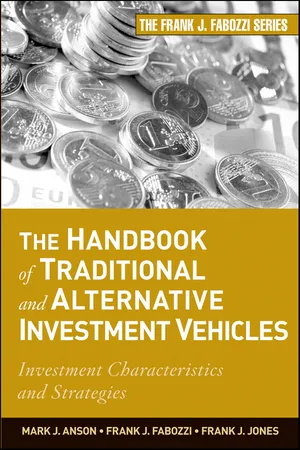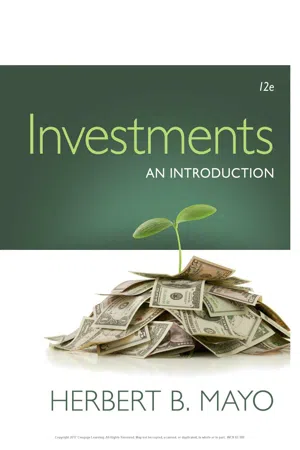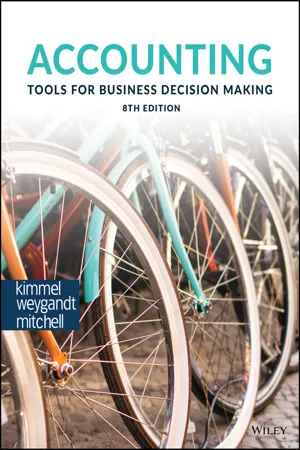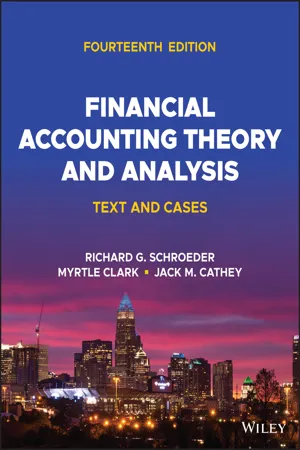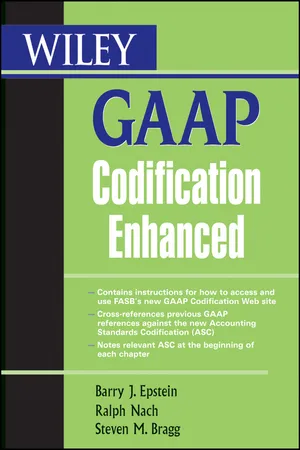Business
Common Stock
Common stock represents ownership in a corporation and typically comes with voting rights at shareholder meetings. Shareholders may receive dividends and have the potential for capital appreciation. Common stockholders are considered residual owners, meaning they have a claim on the company's assets and earnings after bondholders and preferred stockholders have been paid.
Written by Perlego with AI-assistance
Related key terms
1 of 5
10 Key excerpts on "Common Stock"
- eBook - PDF
- Rik W. Hafer, Scott E. Hein(Authors)
- 2006(Publication Date)
- Greenwood(Publisher)
Common Stock VERSUS PREFERRED STOCK Stock is a term used broadly to refer to a security that represents ownership of a business. There are two different types of such securities. The most com- mon type is called Common Stock. Common Stock is a security that does not promise any payments, which are called dividends. While Common Stocks frequently pay dividends (many times on a quarterly basis or at least annually) it is important to understand that the business is not obligated to make such payments. Indeed, the business can only make dividend payments if all other obligations are paid first. Preferred stock is different than Common Stock, because the firm states a dividend payout rate as an obligation. Owners of pre- ferred stock generally expect fixed payments coming from the business (div- idends). These owners also must be paid prior to any Common Stock dividend payments. Individual investors in the United States generally do not own much pre- ferred stock due to a special tax feature of preferred stock. Any corporation that owns preferred stock in another corporation pays taxes on 15 percent of the dividend payment. Individuals who are preferred stockholders do not enjoy this same advantage, however. Individuals pay taxes on the full divi- dend payment. Because preferred stock has this tax advantage for corpora- tions, most preferred stock in the United States is held by other corporations and not by individual investors. For this reason Common Stock is much more prevalent in the U.S. financial system than preferred stock. Stocks in Today’s Economy 41 STOCK VERSUS BONDS Owning a stock is an agreement between an investor and a business that is very different from the agreement provided to bondholders. Bondholders are not owners of the business; they are debt holders. The business agrees to be obligated to—indebts itself—bondholders in exchange for receiving funds. Most bonds offer periodic payments, generally semi-annual, that are called coupon payments. - eBook - ePub
The Handbook of Traditional and Alternative Investment Vehicles
Investment Characteristics and Strategies
- Mark J. P. Anson, Frank J. Fabozzi, Frank J. Jones(Authors)
- 2010(Publication Date)
- Wiley(Publisher)
CHAPTER 2Investing in Common StockCommon Stocks are also called equity securities. Equity securities represent an ownership interest in a corporation. Holders of equity securities are entitled to the earnings of the corporation when those earnings are distributed in the form of dividends; they are also entitled to a pro rata share of the remaining equity in case of liquidation.Common Stock is only one type of equity security. Another type is preferred stock. The key distinction between the two forms of equity securities is the degree to which their holders may participate in any distribution of earnings and capital and the priority given to each class in the distribution of earnings. Typically, preferred stockholders are entitled to a fixed dividend, which they receive before Common Stockholders may receive any dividends. Therefore, we refer to preferred stock as a senior corporate security, in the sense that preferred stock interests are senior to the interests of Common Stockholders.What determines the market price of a share of Common Stock? Like anything else, price depends on what people are willing to pay. The price of a share of stock today depends on what investors believe is today’s value of all the cash flows that will accrue in the future from that share of stock. In other words, investors are not going to pay more today for a share of stock than they think it is worth—based on what they get out of it in terms of future cash flows. What people are willing to pay for a share of stock today determines its market value. This theory of stock prices makes sense. If we could accurately forecast a company’s cash flows in the future, we could determine the value of the company’s stock today and determine whether the stock is over- or under-valued by the market. But forecasting future cash flows is difficult. As an alternative, what is typically done is to examine the historical and current relation between stock prices and some fundamental value, such as earnings or dividends, using this relation to estimate the value of a share of stock. - eBook - PDF
Financial Accounting
Tools for Business Decision Making
- Paul D. Kimmel, Jerry J. Weygandt, Donald E. Kieso(Authors)
- 2016(Publication Date)
- Wiley(Publisher)
The license subjects the corporation’s operating activities to the general corporation laws of the state. STOCKHOLDER RIGHTS When chartered, the corporation begins selling shares of stock. When a corporation has only one class of stock, it is identified as Common Stock. Each share of com- mon stock gives the stockholder the ownership rights pictured in Illustration 11-3 (page 542). The articles of incorporation or the by-laws state the ownership rights of a share of stock. Proof of stock ownership is evidenced by a printed or engraved form known as a stock certificate. As shown in Illustration 11-4 (page 542), the face of the certificate shows the name of the corporation, the stockholder’s name, the class and special features of the stock, the number of shares owned, and the signatures of authorized corporate officials. Certificates are prenumbered to ensure proper control over their use; they may be issued for any quantity of shares. 542 11 Reporting and Analyzing Stockholders’ Equity 1 A number of companies have eliminated the preemptive right because they believe it places an unnecessary and cumbersome demand on management. For example, IBM, by stockholder approval, has dropped its preemptive right for stockholders. Dividends New shares issued Before After 14% 14% Lenders Creditors Stockholders GON Corp. Going out of business Vote in election of board of directors at annual meeting and vote on actions that require stockholder approval. 1. Share the corporate earnings through receipt of dividends. 2. Share in assets upon liquidation in proportion to their holdings. This is called a residual claim because owners are paid with assets that remain after all other claims have been paid. 4. Keep the same percentage ownership when new shares of stock are issued (preemptive right 1 ). - No longer available |Learn more
Investments
An Introduction
- Herbert Mayo(Author)
- 2016(Publication Date)
- Cengage Learning EMEA(Publisher)
In addition to a certificate of incorporation, the firm receives a charter that specifies the relationship between the corporation and the state. At the initial meeting of stockholders, bylaws are established that set the rules by which the firm is governed, including such issues as the voting rights of the stockholders. Firms may issue both preferred and Common Stock. As the name implies, preferred stock holds a position superior to Common Stock. For example, preferred stock re -ceives dividend payments before Common Stock and, in the case of liquidation, pre -ferred stockholders are compensated before Common Stockholders. Although preferred stock is legally equity and hence represents ownership, its features are more similar to the characteristics of debt than of Common Stock. In the eyes of the law, a corporation is a legal entity that is separate from its own -ers. It may enter into contracts and is legally responsible for its obligations. Creditors may sue the corporation for payment if it defaults on its obligations, but the creditors cannot sue the stockholders. Therefore, an investor knows that if he or she purchases stock in a publicly held corporation such as General Electric, the maximum that can be lost is the amount of the investment. If a large corporation (e.g., Eastman Kodak) does go bankrupt, limited liability means its stockholders are safe from the firm’s creditors. - eBook - PDF
- Donald E. Kieso, Jerry J. Weygandt, Terry D. Warfield(Authors)
- 2019(Publication Date)
- Wiley(Publisher)
Among the specific characteristics of the corporate form that affect accounting are the (1) influence of state corporate law, (2) use of the capital stock or share system, and (3) development of a variety of ownership interests. In the absence of restrictive provisions, each share of stock carries the right to share proportionately in (1) profits and losses, (2) management (the right to vote for directors), (3) cor- porate assets upon liquidation, and (4) any new issues of stock of the same class (called the preemptive right). Stockholders’ or owners’ equity is classified into two cat- egories: contributed capital and earned capital. Contributed 15-32 CHAPTER 15 Stockholders’ Equity capital (paid-in capital) describes the total amount paid in on capital stock. Put another way, it is the amount that stockholders invested in the corporation for use in the business. Contributed capital includes items such as the par value of all outstanding capital stock and premi- ums less any discounts on issuance. Earned capital is the capital that develops if the business operates profitably; it consists of all undistrib- uted income that remains invested in the company (retained earnings and accumulated other comprehensive income). Accounts are kept for the following different types of stock. Par value stock: (a) preferred stock or Common Stock, (b) paid-in cap- ital in excess of par or additional paid-in capital, and (c) discount on stock. No-par stock: Common Stock or Common Stock and additional paid-in capital, if stated value used. Stock issued in combination with other securities (lump- sum sales): The two methods of allocation available are (a) the proportional method and (b) the incremental method. - eBook - ePub
Islamic Capital Markets
A Comparative Approach
- Obiyathulla Ismath Bacha, Abbas Mirakhor(Authors)
- 2019(Publication Date)
- WSPC(Publisher)
Chapter 9Common StockS AND EQUITY MARKETSTopics in this Chapter9.1.Introduction 9.2.The Evolution of Stocks 9.3.Why Companies Choose to List 9.4.Rights of Share Ownership9.5.Equity Ownership and Shari’ah Compliance9.6.The Valuation of Common Stocks 9.7.The Market Required Rate of Return 9.8.Required Return and Stock Price Dynamics Dividend Growth and the Trade-off with Capital Gains Stock Market Indices 9.9.Schools of Thought on Stock Price BehaviorChapter ObjectiveThis chapter is designed to provide readers with an in-depth introduction to Common Stocks, their evolution, valuation, and pricing models. Beginning with an explanation of how equity differs from debt, the function of stock markets and the terminologies used are explained. The different schools of thought on stock price behavior are also explained. On completing the unit, the reader should have a good understanding of stocks, why companies choose to list and issue stocks, what returns investors get from holding stocks, how to value stocks, and finally, the alternative explanations of stock price behavior.9.1.IntroductionInvestment in the form of equity is very different from investment in debt instruments. As explained in Chapter 5 on bonds, debt financing is fixed in claim and time. Equity, on the other hand, represents ownership and is therefore residual in claim and has no fixed time (maturity) — i.e., equity is perpetual. By residual in claim, we mean that an equity-holder has a claim on all assets that have not been mortgaged or pledged in any way. Whereas collateralized debt would constitute a claim on a specific asset(s), equity represents a claim on all assets of the firm and not specific ones. To understand what all these means, let us look at an example in Box 9.1 .Box 9.1. Illustration: A Common Stock PurchaseSuppose Ali buys stocks in Malaysia Airlines (MAS) at RM5.00 each for a total investment of RM5,000 (1,000 shares), Ali now becomes a shareholder in MAS. As a shareholder, Ali is essentially a co-owner of MAS. Ali co-owns MAS together with the thousands of other shareholders who have also invested in MAS shares. The size or proportion of Ali’s ownership of MAS will depend on the size of Ali’s holding relative to the total number of outstanding stocks. If, for example, MAS has a total of 100,000 shares outstanding, then Ali’s stake is 1% of MAS. If, on the other hand, MAS has one million shares outstanding, then Ali’s stake is 0.01% or a tenth of 1%. To understand why equity is a perpetual claim, unlike a bond which has no maturity, Ali’s stake in MAS remains for as long as he holds the shares in the company. - eBook - PDF
Accounting
Tools for Business Decision Making
- Paul D. Kimmel, Jerry J. Weygandt, Jill E. Mitchell(Authors)
- 2021(Publication Date)
- Wiley(Publisher)
Within paid-in capital, companies show two classifi- cations: capital stock and additional paid-in capital. If a corporation has treasury stock, it deducts the cost of treasury stock from total paid-in capital and retained earnings to determine total stockholders’ equity. A company’s dividend record can be evaluated by looking at what percentage of net income it chooses to pay out in dividends, as measured by the payout ratio (dividends divided by net income). Earnings performance is measured with the return on Common Stock- holders’ equity (income available to Common Stockholders divided by average Common Stockholders’ equity). *5 Prepare entries for stock dividends. To record the declaration of a small stock dividend (less than 20%), debit Stock Dividends for an amount equal to the fair value of the shares issued. Record a credit to a temporary stockholders’ equity account—Common Stock Dividends Distributable—for the par value of the shares, and credit the balance to Paid-in Capital in Excess of Par. When the shares are issued, debit Common Stock Dividends Distributable and credit Common Stock. 11-34 CHAPTER 11 Reporting and Analyzing Stockholders’ Equity Glossary Review Accumulated Other Comprehensive Income This account includes the cumulative amount of all previous items reported as other compre- hensive income. (p. 11-26). Authorized stock The amount of stock that a corporation is authorized to sell as indicated in its charter. (p. 11-8). Cash dividend A pro rata (proportional to ownership) distribution of cash to stockholders. (p. 11-16). Charter A document that describes a corporation’s name and purpose, types of stock and number of shares authorized, names of individuals involved in the formation, and number of shares each individual has agreed to purchase. (p. 11-6). Corporation A company organized as a separate legal entity, with most of the rights and privileges of a person. - eBook - PDF
Financial Accounting Theory and Analysis
Text and Cases
- Richard G. Schroeder, Myrtle W. Clark, Jack M. Cathey(Authors)
- 2022(Publication Date)
- Wiley(Publisher)
Preferred stockholders give up one or more of the rights usually accruing to stockholders for preference as to dividends or to assets in liquidation. Common Stockholders retain these rights and have a residual claim on both the earnings and assets in liquidation. The capital section of a corporation’s balance sheet is usually subdivided into several compo- nents. In addition to disclosing the legal claims that the various ownership groups have against the assets of the corporation, the separation of the components of capital gives information regarding the sources of capital, dividend requirements, and the relative priorities of different types of equity securities in the event of corporate liquidation. The components of a corporation’s capital section are classified by source in the follow- ing manner: I. Paid-in capital (contributed capital) A. Legal capital: par, stated value, or entire proceeds if no par or stated value accom- panies the stock issue B. Additional paid-in capital – amounts received in excess of par or stated value II. Earned capital (retained earnings) A. Appropriated B. Unappropriated III. Other comprehensive income IV. Treasury stock V. Noncontrolling interest Each of these components is discussed in further detail in the following sections. Paid-in Capital The limited liability advantage of the corporate form of business organization provides that cred- itors may look only to the assets of the corporation to satisfy their claims. This factor has caused various states to enact laws that attempt to protect creditors and inform them of the true nature of the assets and liabilities of individual corporations. State laws generally protect creditors by establishing the concept of legal capital – the amount of net assets that cannot be distributed to 21 For corporate stockholders, a percentage of dividends received are exempt from taxation. - eBook - PDF
- Jay Rich, Jeff Jones(Authors)
- 2017(Publication Date)
- Cengage Learning EMEA(Publisher)
CORNERS TONE 10.7 (Continued) 548 Chapter 10 Stockholders’ Equity Copyright 2018 Cengage Learning. All Rights Reserved. May not be copied, scanned, or duplicated, in whole or in part. WCN 02-300 SUMMARY OF LEARNING OBJECTIVES LO 1. Distinguish between common and preferred stock and describe their use in raising capital. . Corporations sell both Common Stock and preferred stock to raise capital. . Preferred stock generally guarantees a regular dividend and receives priority over Common Stock in the payment of dividends and distribution of assets in liquidation. . Common Stock has voting rights and receives all benefits not assigned to the preferred stockholders or creditors. . Selling different classes of stock (with different features) attracts stockholders with diverse risk preferences and tax situations. LO 2. Record capital stock. . Both preferred and Common Stock are generally recorded at par or stated value. . Any extra consideration received is recorded as ‘‘additional paid-in capital.’’ LO 3. Account for the distribution of assets to stockholders. . Assets are distributed to stockholders by either: – repurchasing their shares of stock – paying dividends . Generally the cost of stock repurchases is recorded as a reduction in stockholders’ eq-uity (a debit to treasury stock). . Typically the corporation pays dividends with cash. . Stock dividends and stock splits do not represent a payout to stockholders. These transactions have no effect on total stockholders’ equity. . Preferred stock generally has dividend preferences such as being cumulative or partici-pating. LO 4. Describe the accounting issues related to retained earnings and accumulated other com-prehensive income. . Retained earnings represents the earnings that the corporation elects not to pay out in dividends. . Ending retained earnings is calculated by adding net income and subtracting divi-dends to beginning retained earnings. - eBook - ePub
- Barry J. Epstein, Ralph Nach, Steven M. Bragg(Authors)
- 2009(Publication Date)
- Wiley(Publisher)
Occasionally, several classes of stock will be categorized as common (e.g., Class A common, Class B common, etc.). Since there can be only one class of shares that represents the true residual risk-taking ownership in a corporation, it is clear that the other classes, even though described as common shareholders, must in fact have some preferential status. Typically, these preferences relate to voting rights. An example of this situation arises when a formerly closely held corporation sells shares to the public but gives the publicly held shares a disproportionately small capacity to exercise influence over the entity, thereby keeping control in the hands of the former majority owners even as they are reduced to the status of minority owners. The rights and responsibilities of each class of shareholder, even if described as common, must be fully disclosed in the financial statements.Issuance of shares. The accounting for the sale of shares by a corporation depends upon whether the stock has a par or stated value. If there is a par or stated value, the amount of the proceeds representing the aggregate par or stated value is credited to the common or preferred stock account. The aggregate par or stated value is generally defined as legal capital not subject to distribution to shareholders. Proceeds in excess of par or stated value are credited to an additional paid-in capital account. The additional paid-in capital represents the amount in excess of the legal capital that may, under certain defined conditions, be distributed to shareholders.A corporation selling stock below par value credits the capital stock account for the par value and debits an offsetting discount account for the difference between par value and the amount actually received. If the discount is on original issue capital stock, it serves to notify the actual and potential creditors of the contingent liability of those investors. As a practical matter, corporations avoided this problem by reducing par values to an arbitrarily low amount. This reduction in par eliminated the chance that shares would be sold for amounts below par.
Index pages curate the most relevant extracts from our library of academic textbooks. They’ve been created using an in-house natural language model (NLM), each adding context and meaning to key research topics.

